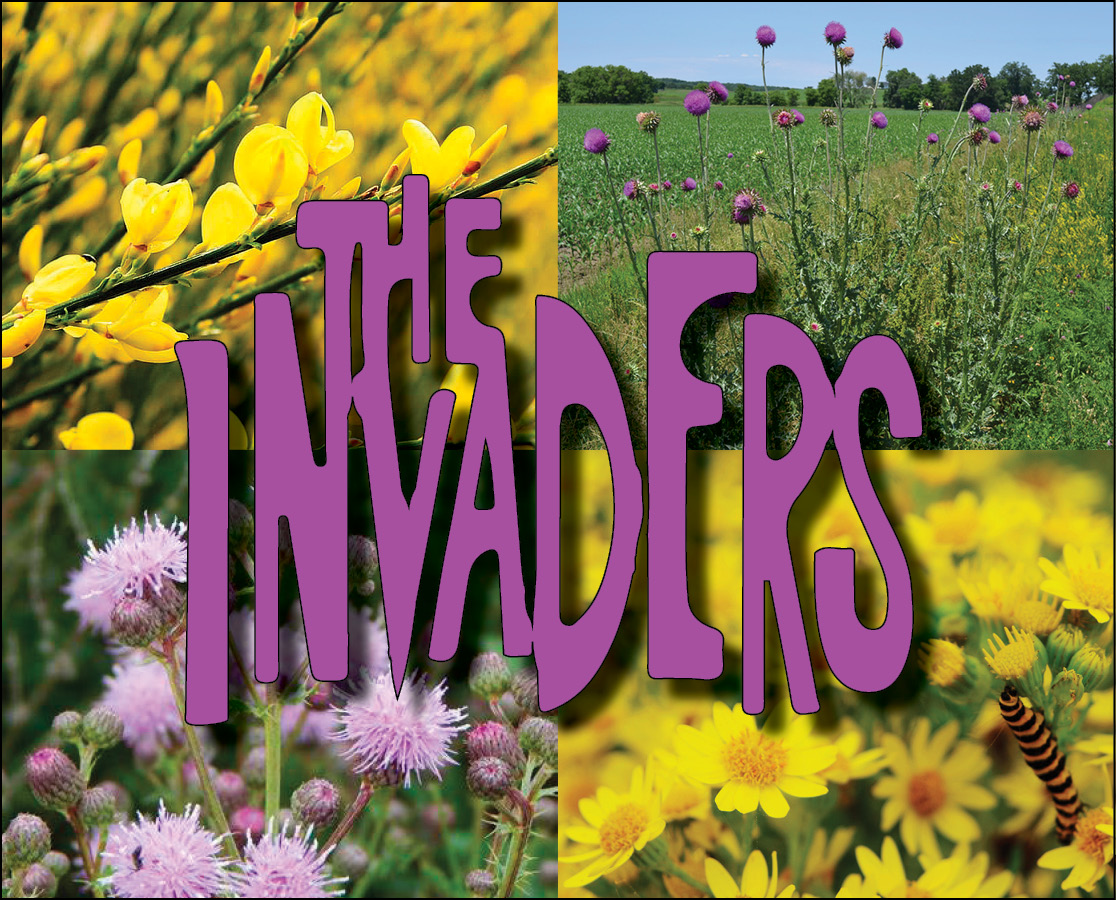Natural Resources raising awareness about non-native plants

Danielle Harrison
Smoke Signals staff writer
Invasive plants come in several forms and many have innocent-enough sounding names: Fox glove, velvet grass and water primrose. However, when not monitored closely, they can pose a serious threat to an area’s ecosystem.
This year, the Tribe’s Natural Resources Department will be sending a series of educational staff e-mails with resources on invasive plants and how to best prevent their spread as a part of National Invasive Species Awareness Week on Feb. 22-26.
The effort is being led by Natural Resources Specialist Anna Ramthun. Eventually, she hopes to have a full educational program with in-person events.
“Invasive species affect every community, including Grand Ronde,” Ramthun says. “They are listed as the top five causes of loss of biodiversity, an increase in wildfires and reduction of habitat restoration effectiveness.”
National Invasive Species Awareness Week is an international event occurring in the spring to raise awareness about invasive species, the threat that they pose and what can be done to prevent their spread. The North American Invasive Species Management Association’s mission is to “support, promote and empower” invasive species prevention and management in North America.
“They want to bring awareness to the public about the presence of invasive species and the impacts on natural resources nationwide,” Ramthun says. “My purpose in this is to raise awareness of invasive species on Tribal land and how we can all help keep them off Tribal land.”
Ramthun says that the most common invasive species in the area include decorative plants like scotch broom and English ivy. These displace native and beneficial plants, and smother tree seedlings, hampering reforestation efforts. English ivy is particularly problematic and often threatens all vegetation levels of forested and open areas. It can grow along the ground and climb into the forest canopy, according to the website invasive.org.
Other invasive plants often found on the Reservation include common tansy, Canada thistle, bull thistle and reed canary grass.
“Some of these things have been here for decades, and others were plants that were brought back in the 1800s and used as shipping material,” Ramthun says. “Others were brought by birds or cars. Each has properties that make them destructive to the native plants, and the quality of the wildlife habitat and streams for salmon.”
An annual invasive species awareness program was first held in the United States in January 2010 in Washington, D.C., and it included bipartisan groups that hosted workshops and presentations on climate change, energy and the green economy. Now, it has evolved to include the annual program as well as local, state, regional and Tribal representatives who host educational events and workshops in their local communities. This year, everything has switched to a virtual format due to the COVID-19 pandemic.
Ramthun suggests calling or visiting a local nursery website to learn more about native plants and which ones are best suited for a particular area. Information also can be found at the Oregon State University Extension Service website at extension.oregonstate.edu.
And as far as keeping invasive species from spreading further?
“One of the best ways is to clean off your boots and your pets when you finish a hike,” she says. “It’s an easy way to keep these plants from being transported elsewhere.”
Tribal Restoration Ecologist Lindsay McClary says that the Tribe has a number of properties specifically designated for fish and wildlife habitat conservation, and that a large portion of these require restoration to function properly. This involves the removing of invasive species, especially non-native vegetation, and the efforts tend to be ongoing.
One of the examples she gave was that of the Rattlesnake Butte property located near Monroe, which the Tribe re-acquired through the Willamette Wildlife Mitigation Program. The site is predominately oak habitat, once abundant in the Willamette Valley.
“Before the Tribe re-acquired it, the site was logged in an effort to convert it to a vineyard,” McClary says. “That did not happen, and invasive species colonized the site, from both natural transport and likely logging equipment. In some areas, the density is very high, specifically scotch broom. The Tribe has been successful in securing several grants to support restoration efforts on site. Although progress is happening, it will be a long road to remove these invasives and restore oak habitats.”
For more information about invasive species and how to prevent their spread, visit naisma.org/resources/resource/.
